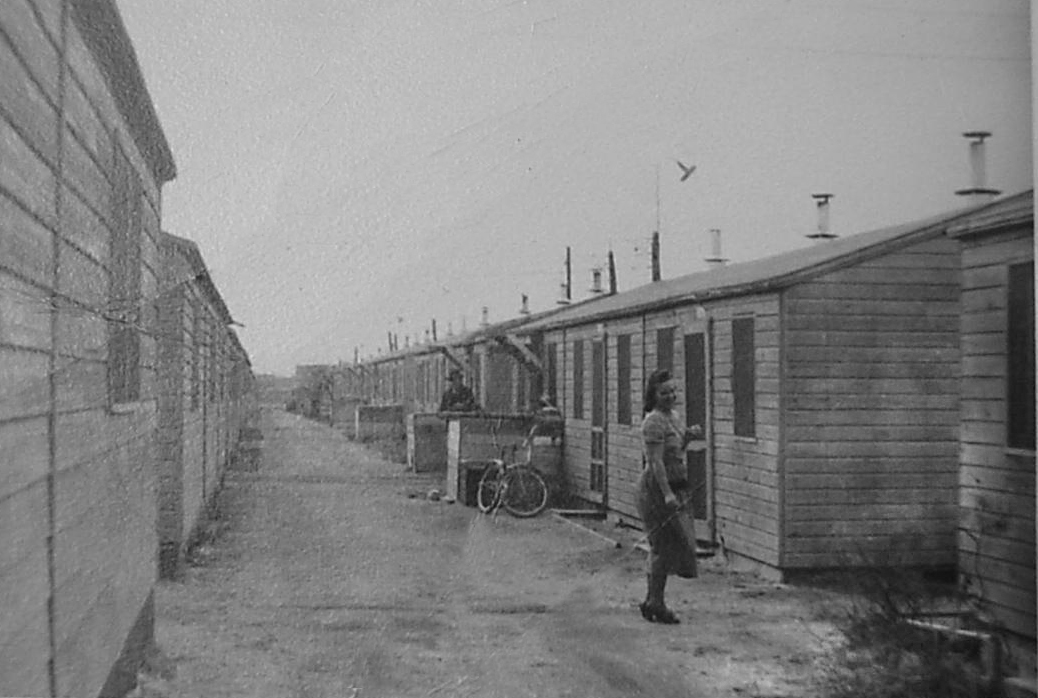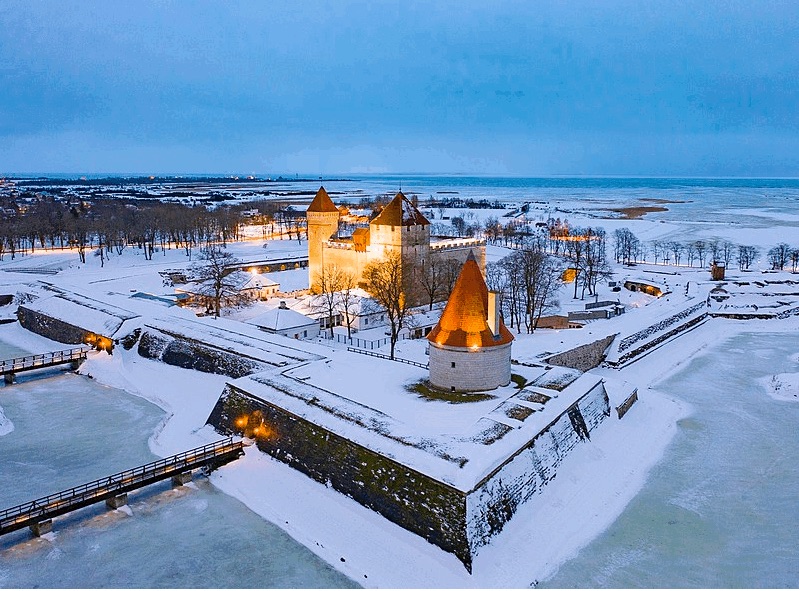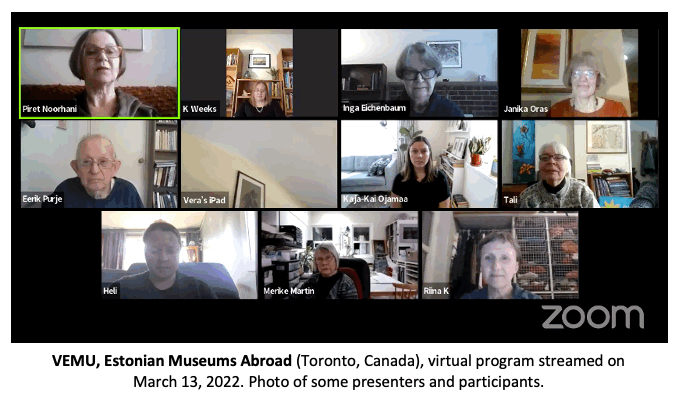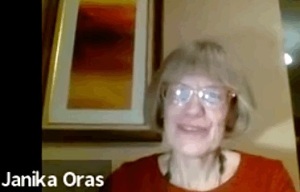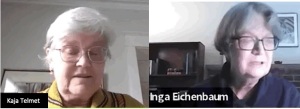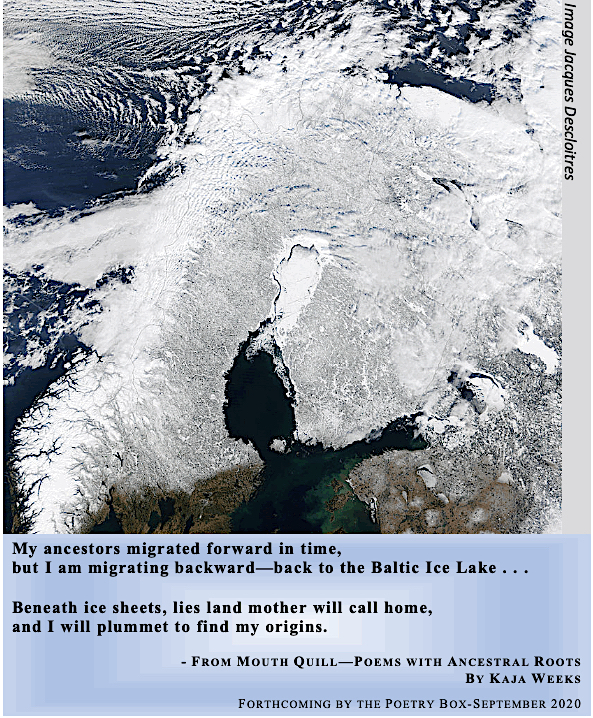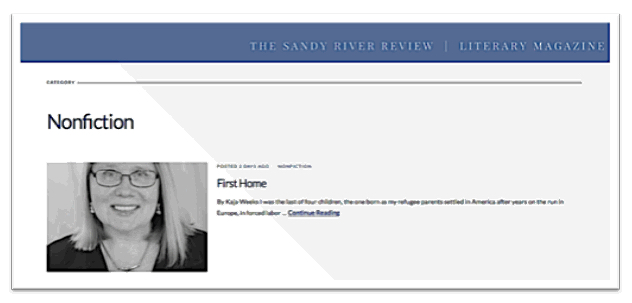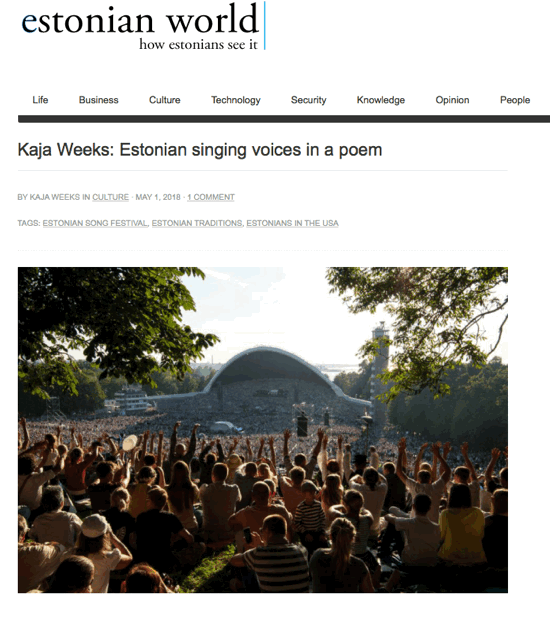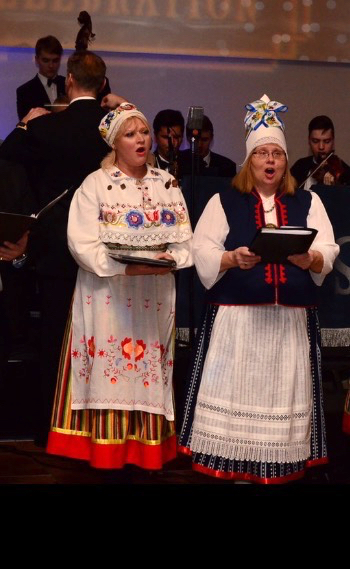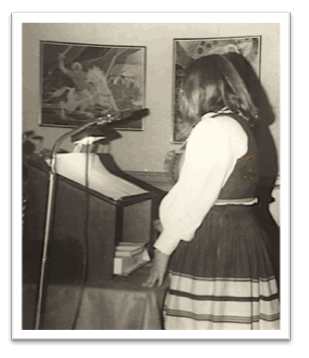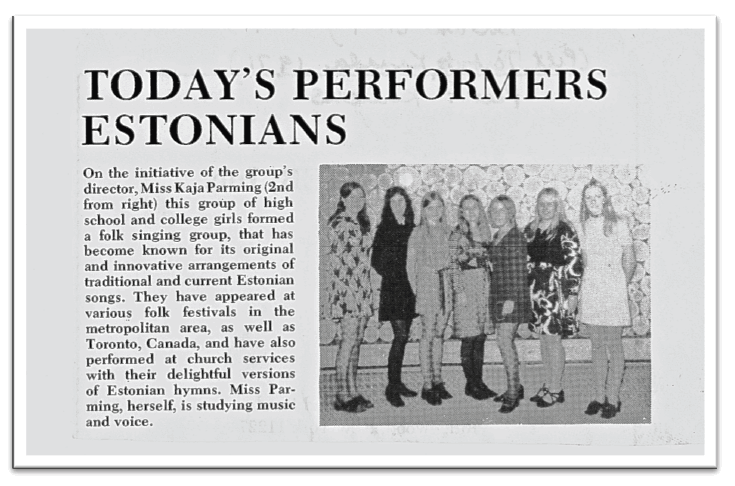An Essay by Kaja Weeks
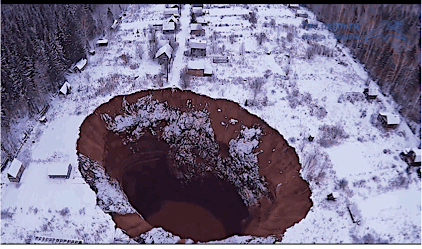
One afternoon when I was five a taxi stopped in front of our small northern New Jersey house. A plump woman in a purple-red flowery dress pushed herself out. Thick stocking seams on her calves ran above sturdy black shoes. With a bulging purse and small suitcase she crossed stepping stones through a grassy yard right to the brick steps upon which I was sitting, just taking in summer. “You must be the little songbird,” she said. Not withstanding that she spoke in Estonian, something no one in the neighborhood besides our family spoke, I bolted inside and alerted my mother that a võõras naine (a stranger woman) was at our house.
Tädi (Aunt) Meeta had come to visit and, as far as I knew, I was meeting our one living relative. Whether the others were dead or not spoken of was a condition I was too young to understand. Tädi Meeta was my father’s sister and, being fifteen years his senior, the only one who was able to risk no peril when she told him, a volatile man, to “pipe down.” I liked her and was surprised to learn that she had a family back in Lake-in-the Hills, Illinois – so we had a little clump of living relatives, after all.
As I grew out of early childhood another relative took on life. She had always been present in our living room – a woman with serious gaze held in a small, lone photo frame. At some point I understood that she was my mother’s mother. And that she was alive. Somewhere — we couldn’t get there, nor she to us.
Miili was my grandmother, but even in absentia I didn’t have that relationship with her. Whenever my sister and I spoke of her out loud we used the term “your mother”—foremost, she was our mother’s missing mother. A hole existed. Something awful had happened that had swallowed up her mother and anything beyond the portrait was simply conveyed by silent watery eyes. Asking more hovered on forbidden, dangerous. She was in a place called Eesti (Estonia), from where my brothers and parents had fled from during war, and I knew what that was from an amalgam of stories, screams and shouts, lectures, ceremonies, songs and photos. Mostly, mother’s-mother was described as “left behind”; but then sometimes she had “stayed behind” because “she was waiting for Sass to come back.” Who was Sass? Why was it a mystery? Another void with centripetal force into which significant people had vanished.
Though I continued using the appellation “your mother,” I had also privately begun to claim Miili as my grandmother as soon as I understood that, rightfully, she was. I recreated her from the flimsiest Known, retrieved her with magical thinking. Like my mother and me, my grandmother had green eyes, and at eight I secretly determined that fact alone made us a trio of soul mates. But actual communication was sparse and letters from behind the Iron Curtain never came directly to our home. They were sent surreptitiously — routed to a place in New York City under a code name. One day a thin, onion skin air-mail envelope properly addressed to my mother arrived from Estonia to our front mailbox. She sat with the letter in her lap for a long time and quietly wept. Her mother, who twenty years earlier had, for “just a little while,” sent off her daughter from Pärnu pier amidst bombs and a burning coastline, who had said, “You go — I’ll wait for Sass,” had died. She never saw her daughter again. Sass never came back.
Short for Aleksander, Sass was my mother’s brother. Gradually my mother opened up about him and others. Their youth in the beautiful seaside town, Pärnu, had been cherished and I hungered for stories; listened, asked questions, wrote into notebooks. It was as if I was plucking her family one by one from where they had been sucked, a dark vortex that had pulled everything under– mother, brother, aunts, cousins and schoolmates never to be touched again; cobblestone streets and tall converging Linden boughs in a town of allées, white beaches – land she loved — never to be seen. Instead, the terror from cattle-cars of people roaring toward deadly Gulags brandished the air.

Sass was snatched midsummer, 1941, when Soviet Russian soldiers took 10,000 people — in one night. Even into old age my mother was never able to shake a trance-like state over it. When, unable any longer to bear the image of my uncle’s remains for eternity under boundless, unidentified Siberian north, I finally asked straight-out, “Where was he taken?” she could only whisper, “I don’t know – somewhere far away in Russia.” “I’m going to find out,” I promised and, unbelievably, I did.
***
It’s 2016. My mother, too, is gone. With an Estonian film crew I am being interviewed by Williams College students for their class, “Documenting Stories of Escape and Survival.” I am to tell of the effects of Totalitarian regimes, of being American-born to my war refugee parents. One hour has stretched to two. I’ve already sung ancient bird-like melodies and wept through the “Singing Revolution” that helped restore Estonia’s independence after fifty years, squirmed over questions on my odd “double life.” Now I’m sweating. My head feels crushed by chaotic, dissonant sounds – souls crying, shrieking. My finger rests on an aerial photo that, to my utter astonishment, I uncovered from Russian news days earlier. It is a massive sinkhole. Unearthly, its copper-colored sloping pit with a black center presently grows over a buried salt mine in Solikamsk — north of Perm (the famous archipelago of gulags that Solzhenitsyn endured), in Solikamsk — the very place where Sass perished. My voice hardens. Pressurized, it pitches higher, matching the resonance of shrieking souls.
“I don’t wish harm to the people there now,” I hear myself say, “but I wish for this sinkhole to keep growing and growing, swallow up all the earth in that region. Completely. Return it to its primordial state and wipe out all the evil man did here. Nature’s revenge. Karma.”
It’s my revenge. I have never heard myself speak like this. But I realize the picture of the sinkhole is a huge eye. The eye of God. Of the missing God, and this is the moment of telling.

Copyright © 2017 by Kaja Weeks
The Sinkhole was first published in Transference: The New Directions Journal, Fall 2017. Illustrations added to Lyric Overtones site.
